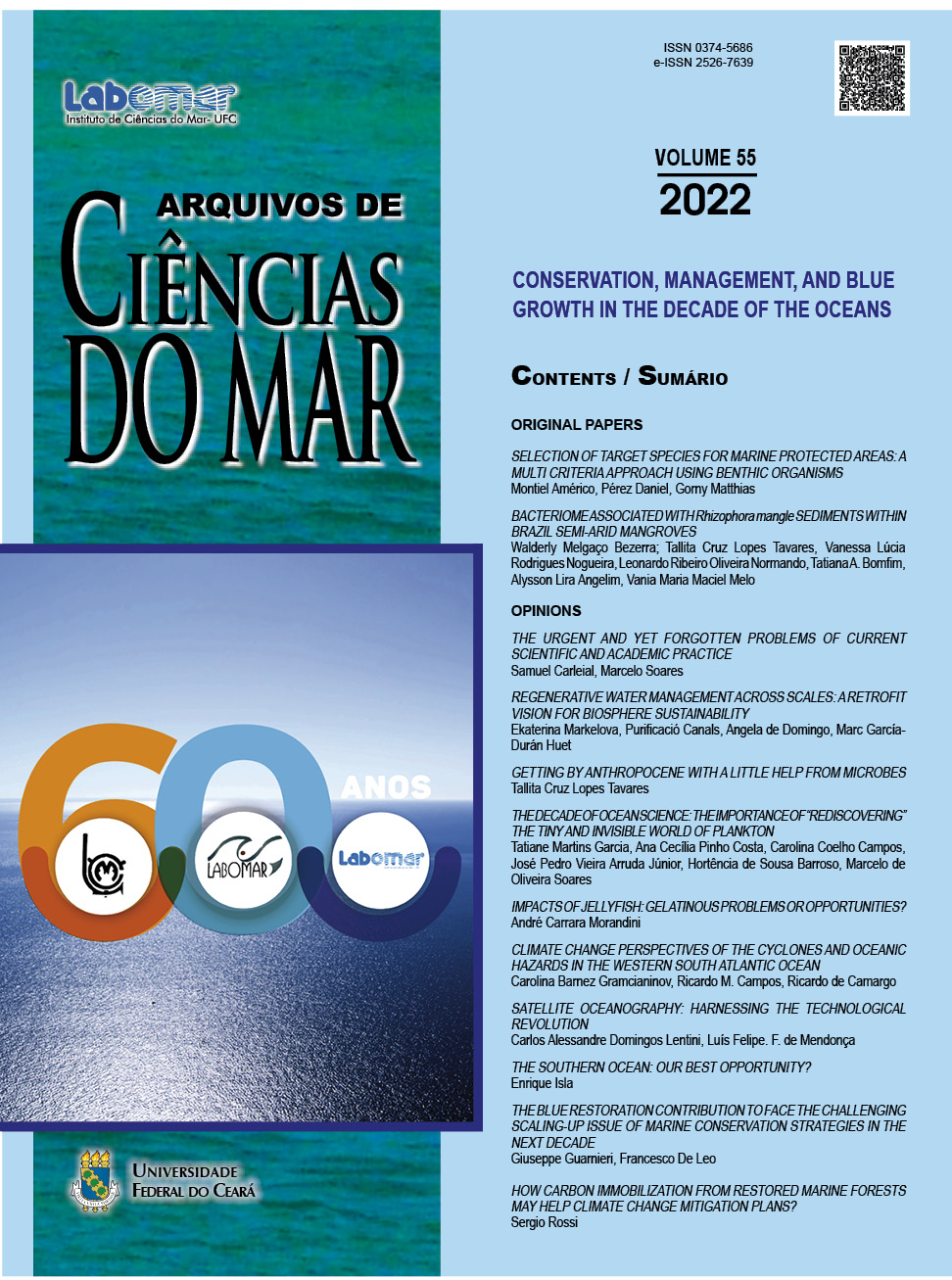CONSERVATION OF LONG-LIVED MARINE SPECIES: SOME HINTS FOR ADOPTING A POPULATION APPROACH
Conservação de espécies marinhas de vida longa: algumas dicas para adotar uma abordagem de populações
DOI:
https://doi.org/10.32360/acmar.v55iEspecial.78515Abstract
Long-lived species, whose life-span can amply exceed one century, play a fundamental role within marine communities. However, due to the short time windows covered by most research our knowledge of their demography is quite limited, consequently severely limiting the possibility of understanding their complex dynamics over the long run. Moreover, several aspects of the life-history of long-lived populations are largely unknown. This short review describes some examples of demographic analyses in terrestrial ecology, which are then applied to long-lived marine species. The ultimate aim is to suggest that
wider application of demographic concepts and models could improve our ability to understand how these populations might respond to unusual increases in mortality rates due to Global Climate Changes and other sources of anthropogenic disturbance. In this framework, close, continuous, reciprocal and dialectic interaction between population mathematicians and field marine ecologists could greatly help to both design the necessary research and set out improved population dynamic models for such species. Such models would constitute an important first step in increasing our knowledge, and thereby implementing management plans for fostering the conservation of long-lived marine species, which too frequently have been defined by international conservation authorities.
Keywords: demography, mortality tables, life-tables, gorgonian corals, cetaceans.
Downloads
Downloads
Published
Issue
Section
License
1. Proposta de Política para Periódicos de Acesso Livre
Autores que publicam nesta revista concordam com os seguintes termos:
- Autores mantém os direitos autorais e concedem à revista o direito de primeira publicação, com o trabalho simultaneamente licenciado sob a Licença Creative Commons Attribution que permite o compartilhamento do trabalho com reconhecimento da autoria e publicação inicial nesta revista.
- Autores têm autorização para assumir contratos adicionais separadamente, para distribuição não-exclusiva da versão do trabalho publicada nesta revista (ex.: publicar em repositório institucional ou como capítulo de livro), com reconhecimento de autoria e publicação inicial nesta revista.
- Autores têm permissão e são estimulados a publicar e distribuir seu trabalho online (ex.: em repositórios institucionais ou na sua página pessoal) a qualquer ponto antes ou durante o processo editorial, já que isso pode gerar alterações produtivas, bem como aumentar o impacto e a citação do trabalho publicado (Veja O Efeito do Acesso Livre).

